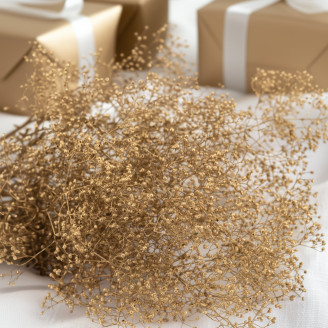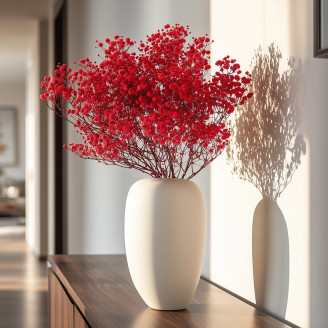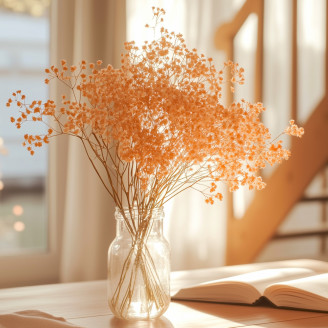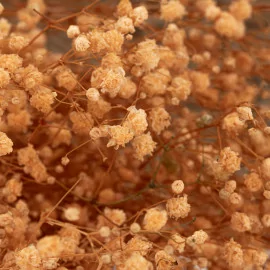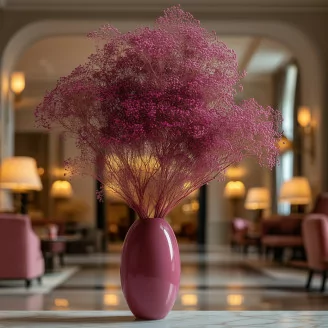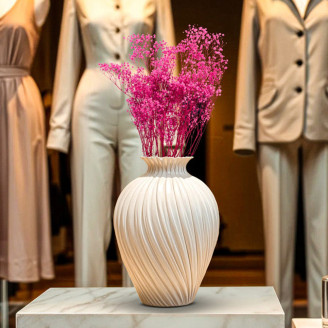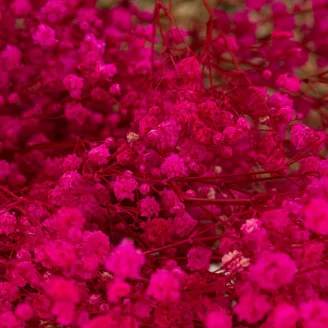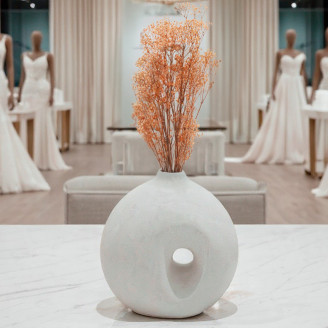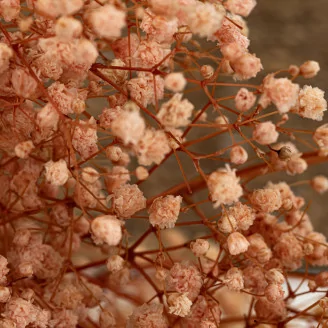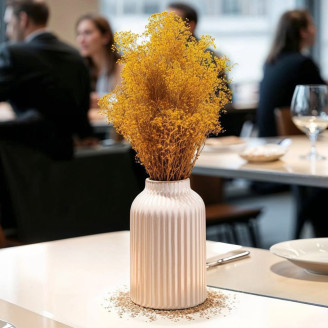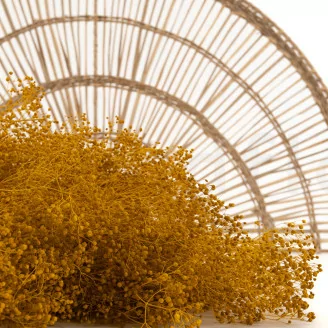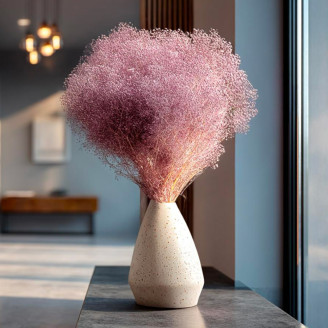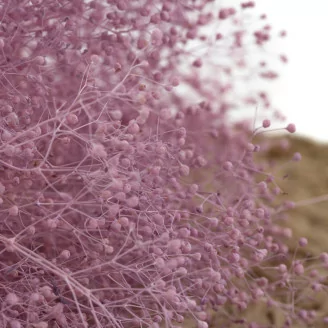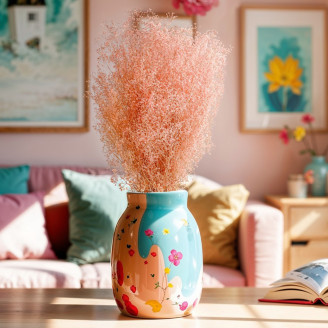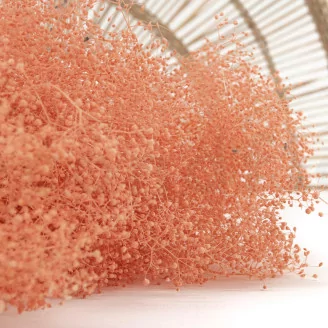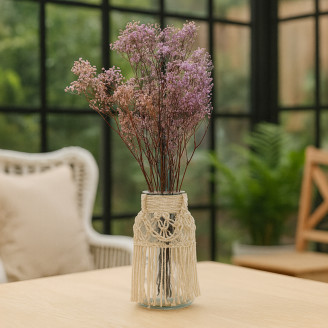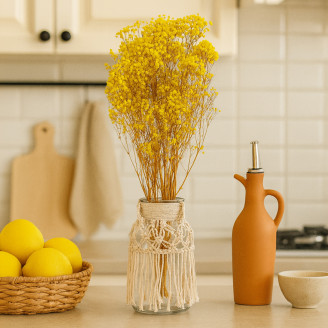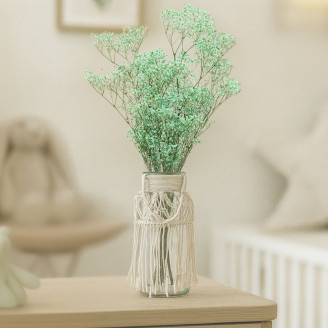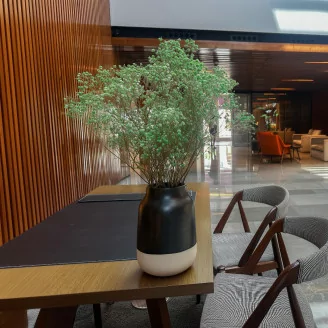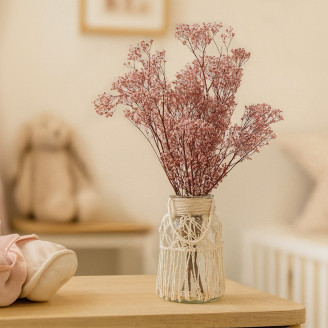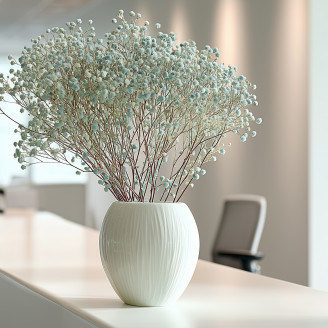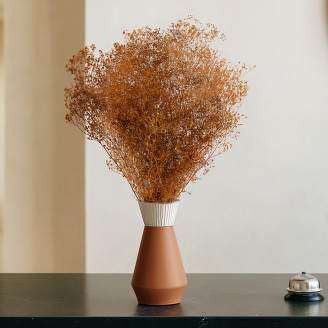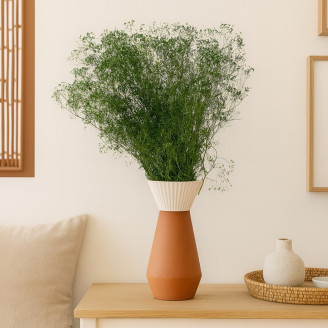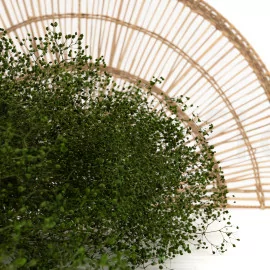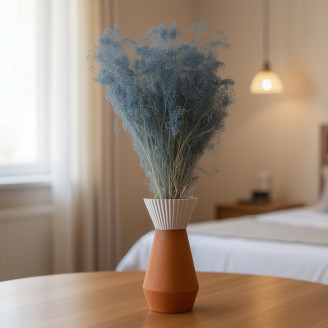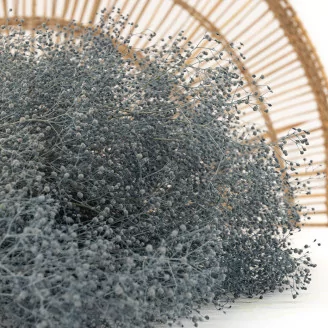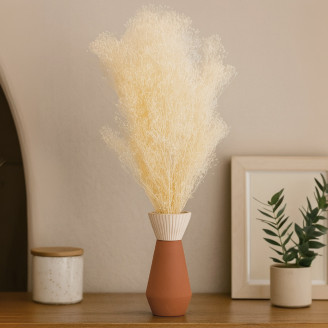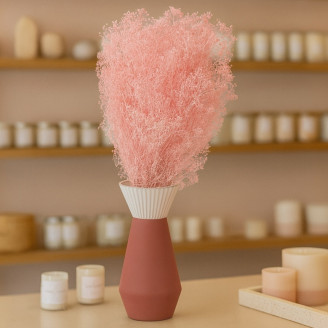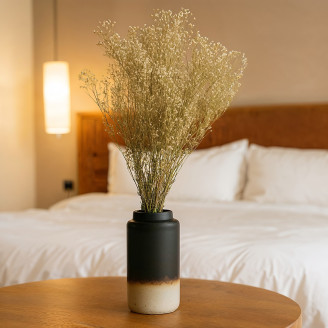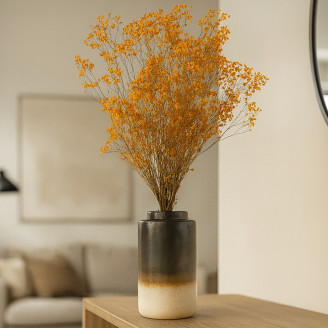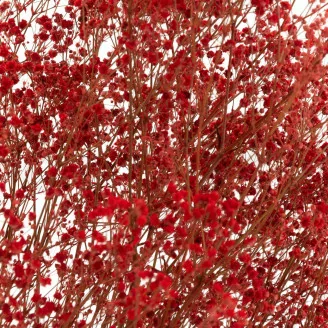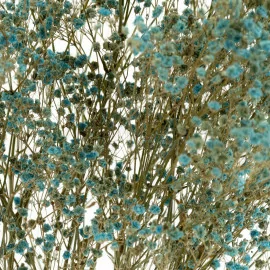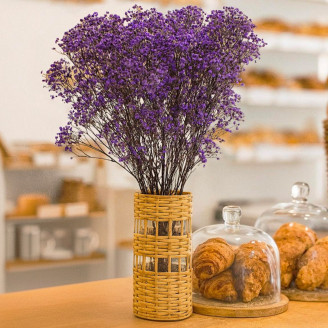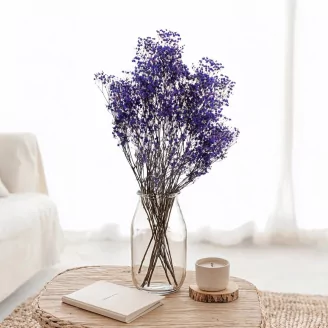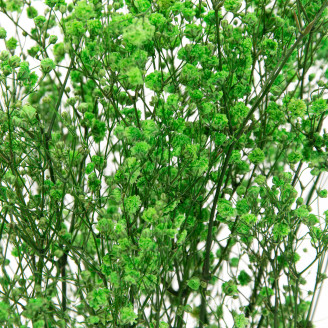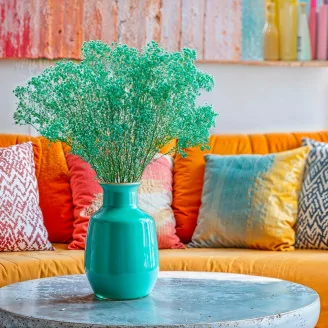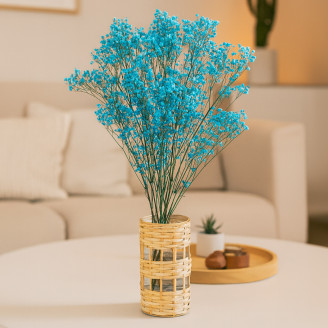Preserved Gypsophilas
Preserved Gypsophila: The Timeless Flower for Your Long-Lasting Floral Creations
Airy, delicate, and naturally poetic, preserved gypsophila stands out as a top choice decorative preserved flower for discerning professionals. Thanks to an eco-friendly preservation process, this flower retains its flexibility, brilliance, and finesse without requiring any maintenance.
Offering a sustainable alternative to fresh or dried flowers, it enhances weddings, floral arrangements, shop windows or DIY projects with unmatched lightness. Its fine inflorescences evoke a botanical breath frozen in time, perfect for bohemian, romantic, or minimalist settings.
Available in a palette of subtle or vibrant shades, preserved gypsophila adapts to every creative desire. Discover our carefully selected references to turn your floral ideas into inspired and long-lasting creations.
Discover Our Preserved Gypsophila Collection
A Wide Range of Colours to Suit Every Mood
A key element in contemporary floral arrangements, preserved gypsophila is available at SecondFlor in a rich and inspiring colour palette. Whether you're looking for white preserved gypsophila for a pure and natural look, or bolder shades to energise your arrangements, our range caters to every creative vision.
Among our most popular references: Hot Pink, vibrant and daring; Pastel Blue, soft and dreamlike; Natural, timeless and organic; or Marmalade, a warm, sunlit shade evoking the tones of autumn.
These colours integrate seamlessly into a variety of styles: boho, romantic, minimalist design, or Japandi. Let your creativity flow by combining our gypsophila with other preserved floral elements to play with contrast, texture, and emotion.
Two Formats to Suit Your Creations
To meet all floral design requirements, our preserved gypsophila comes in two distinct formats. The classic version, ideal for large bouquets or wall installations, features generous branching and a flexible structure.
The mini gypsophila, finer and more delicate, is perfect for DIY creations: buttonholes, hair accessories, intimate table centrepieces or botanical crowns.
Whatever the chosen format, each gypsophila branch is selected for its visual quality and lasting hold, ensuring a professional and durable result.
Why Choose Preserved Gypsophila?
Botanical preservation is an eco-friendly and innovative process that replaces the natural sap of a fresh flower with a solution of glycerine, water, and food colouring. Carried out at the precise moment the flower reaches its visual peak, this technique guarantees optimal preservation of its appearance, flexibility, and colour.
Unlike dried flowers, which are more fragile and brittle, preserved gypsophila maintains a fresh and natural look for many years. It requires no watering, light, or special care. Once arranged, it becomes a lasting element of your décor.
For decoration professionals, it is a reliable, durable, and aesthetically consistent material. Whether creating in advance, storing without concern, or meeting bespoke demands, everlasting gypsophila is a true asset.
Perfect for Your Floral Arrangements
For a Boho or Romantic Wedding
A symbolic flower of tenderness and lightness, gypsophila has long been a favourite guest at weddings. When preserved, it becomes the perfect ally for creators of long-lasting wedding décor. Its airy structure drapes bridal bouquets with a poetic, weightless veil.
It is also used in table centrepieces, flower arches, buttonholes, and floral combs. It fits subtly into a boho-chic, rustic, or romantic theme and can be used alone for a minimalist effect or paired with roses, eucalyptus, or preserved hydrangeas.
Thanks to its impeccable hold and lightness, it allows for mobile, transportable creations without deterioration. A safe bet for arrangements that must endure time… and emotion.
For Interior Décor and DIY
In interior design, preserved gypsophila becomes a vector of serenity and elegance. In a glass vase or wall hanging, it suggests a silent botanical breath, conducive to calm and contemplation.
With no upkeep required, it fits perfectly into botanical frames, wall wreaths, or suspended installations. Its unchanging appearance makes it an ideal choice for long-term projects: shops, window displays, hotels, restaurants, or wellness spaces.
For DIY décor enthusiasts, it offers great flexibility and endless creative possibilities. Whether customising a gift, adding greenery to a frame, or crafting a miniature world in a jar, preserved gypsophila becomes a poetic material.
Our Tips for Preserving Your Preserved Gypsophila
Although maintenance-free, preserved flowers deserve a few precautions to retain their full beauty. Here are our recommendations:
- Use your gypsophila exclusively indoors
- Avoid direct exposure to sunlight through glass
- Protect it from excessive humidity (recommended level: below 70%)
- Never water it, not even slightly
- Avoid placing it near heat sources (radiators, halogen lamps…)
When these simple rules are followed, an exceptional lifespan can be achieved — often lasting several years. The flower does not wilt or suddenly change shape — it evolves slowly, offering a plant-based quality of life that no other floral material can match.
Get Inspired with Our Floral Décor Ideas
A versatile and timeless element, preserved gypsophila pairs elegantly with other floral species to enhance your arrangements. Combine it with our preserved roses to play with volume and texture, or mix it with eucalyptus or hydrangea for a dense, graphic composition.
For a minimalist look, go bold with a monochrome bouquet in white or nude gypsophila. For a romantic version, opt for a pastel mix in soft shades like pale pink, lilac, or sage green. For events or displays, design modular centrepieces to match the season or theme, using different bases: vases, bud vases, or hanging structures.
Let your imagination take the lead. Each branch becomes a creative tool in the service of sustainable floral aesthetics.
FAQ
How is gypsophila preserved?
Gypsophila is preserved using a two-step process known as double immersion. It is first dehydrated in an alcohol bath, then rehydrated with a solution of plant-based glycerine, propylene glycol, and food colouring. This process ensures a natural, flexible, and long-lasting appearance.
What is the difference between fresh and preserved gypsophila?
Fresh gypsophila is short-lived and sensitive to heat and humidity. Preserved gypsophila, however, is frozen in time. It requires no water, light, or specific care, yet retains the look of a freshly cut flower.
How can gypsophila be used in a wedding bouquet?
As a main flower or complement, preserved gypsophila adds a cloud-like, poetic touch to bridal bouquets. Pair it with structured blooms or use it alone in a monochrome design for a refined arrangement. It’s also ideal for accessories like buttonholes or crowns.
Can gypsophila be combined with other dried flowers?
Yes, preserved gypsophila pairs beautifully with dried flowers such as lagurus, statice, or yarrow. These combinations create textured, airy yet structured arrangements, perfect for interior décor or special events.
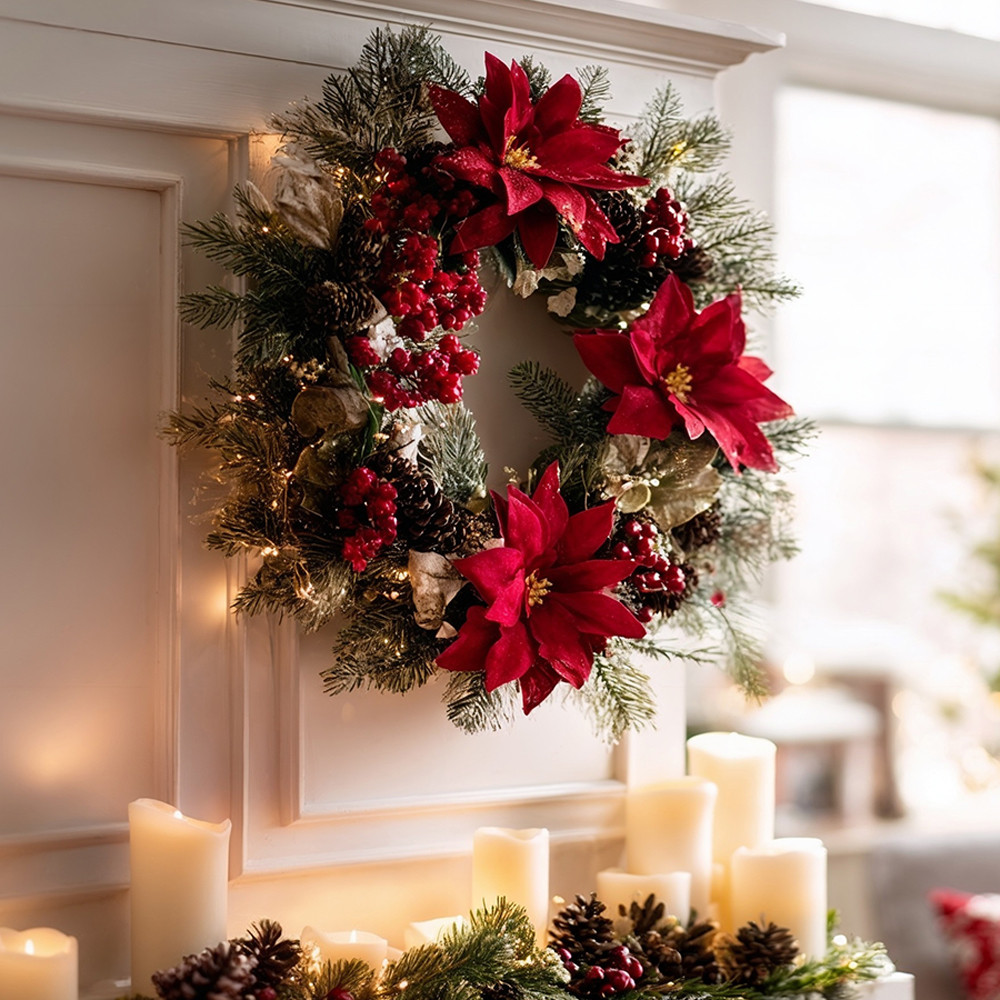
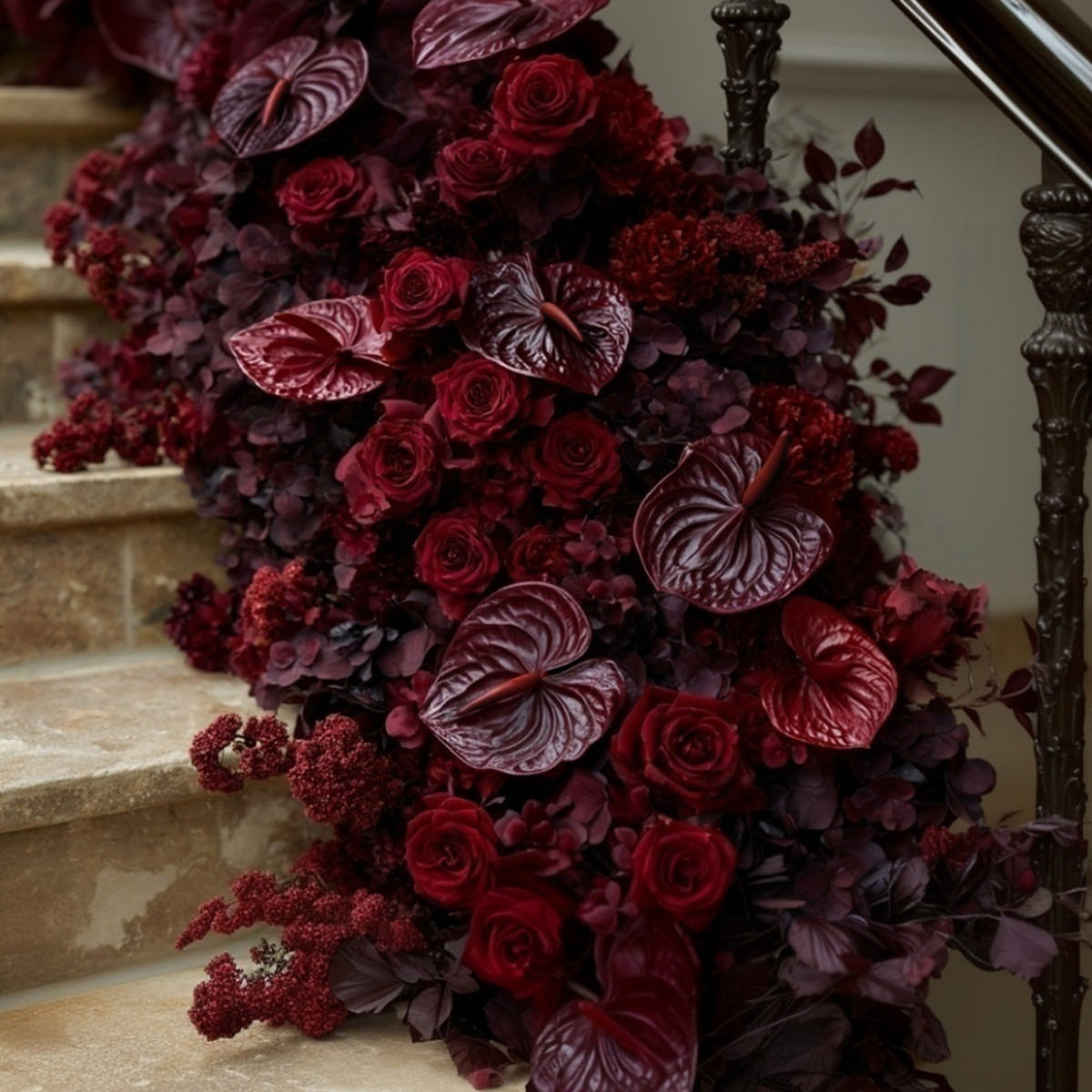
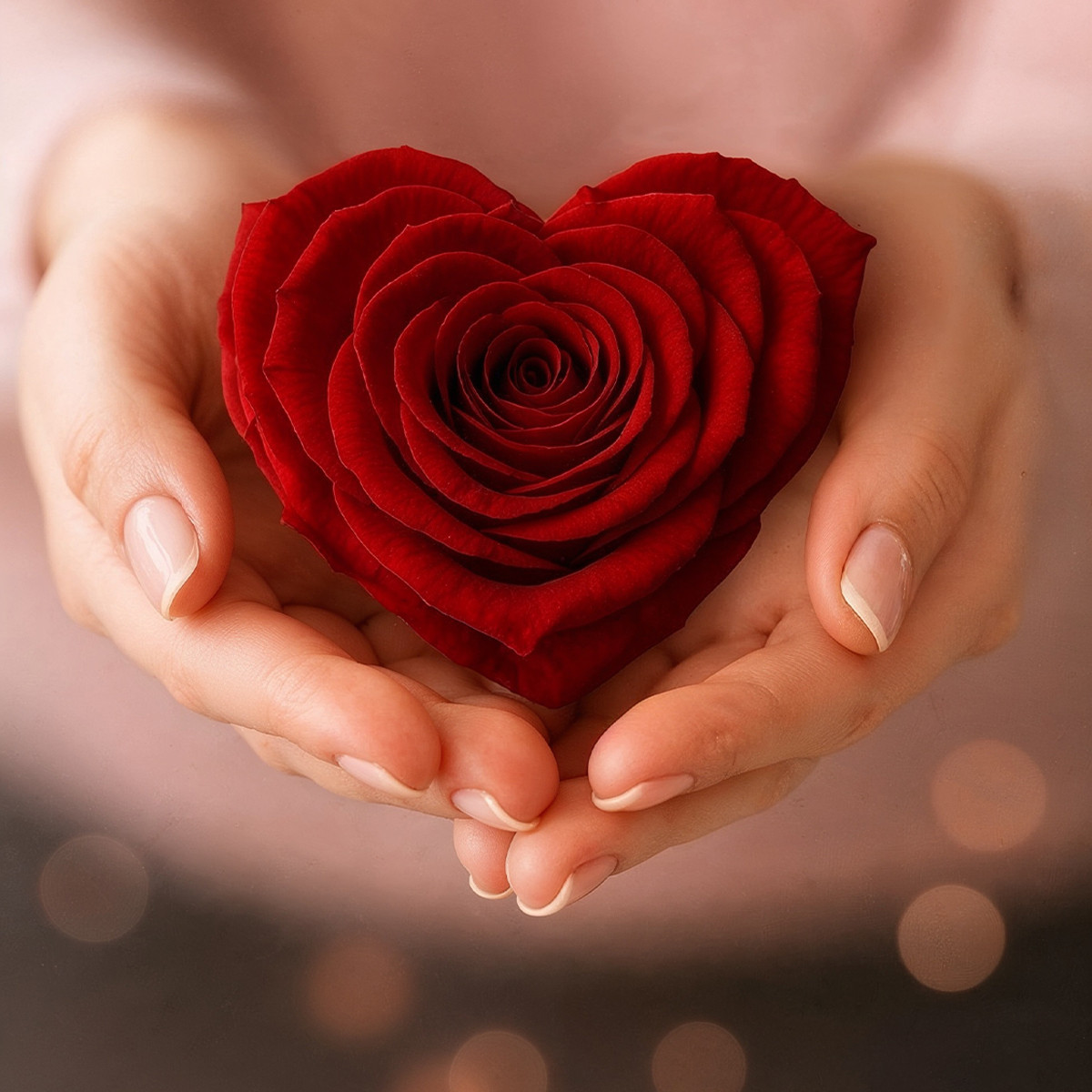
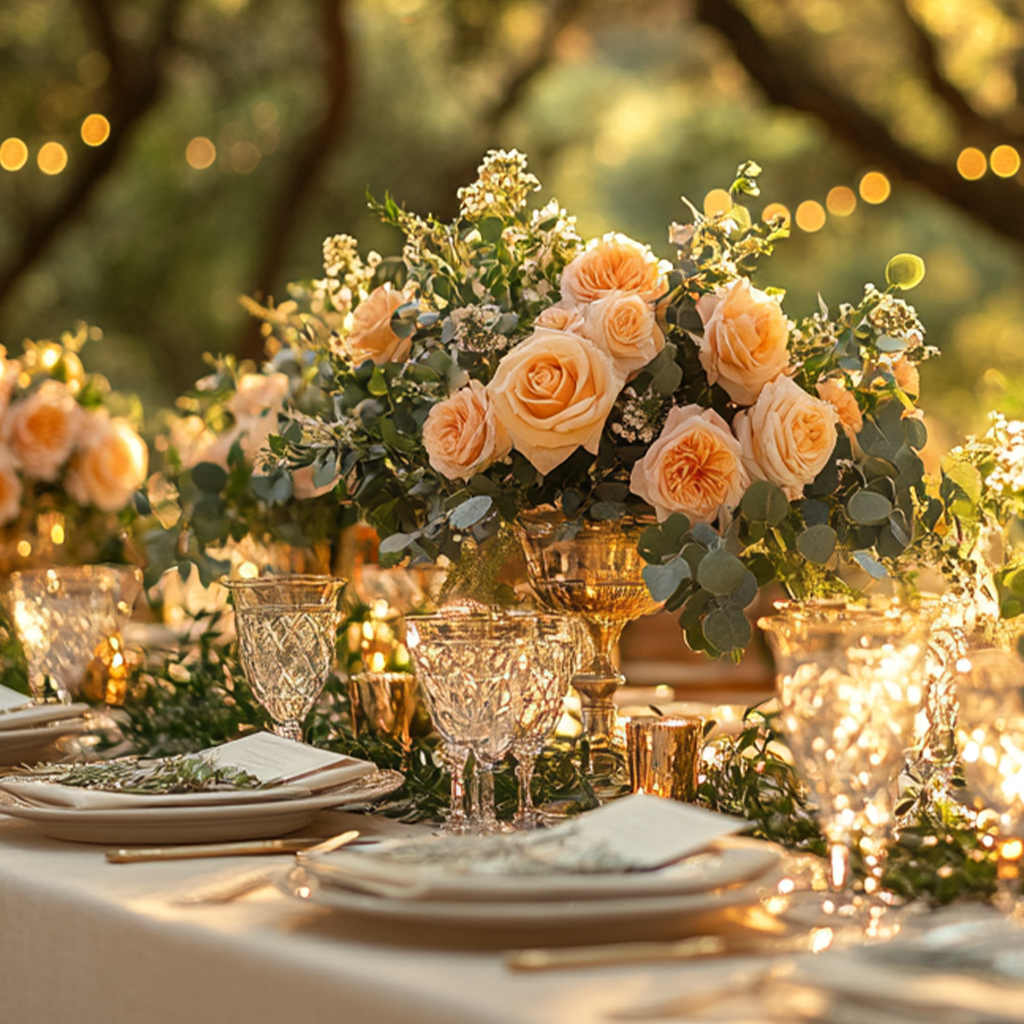
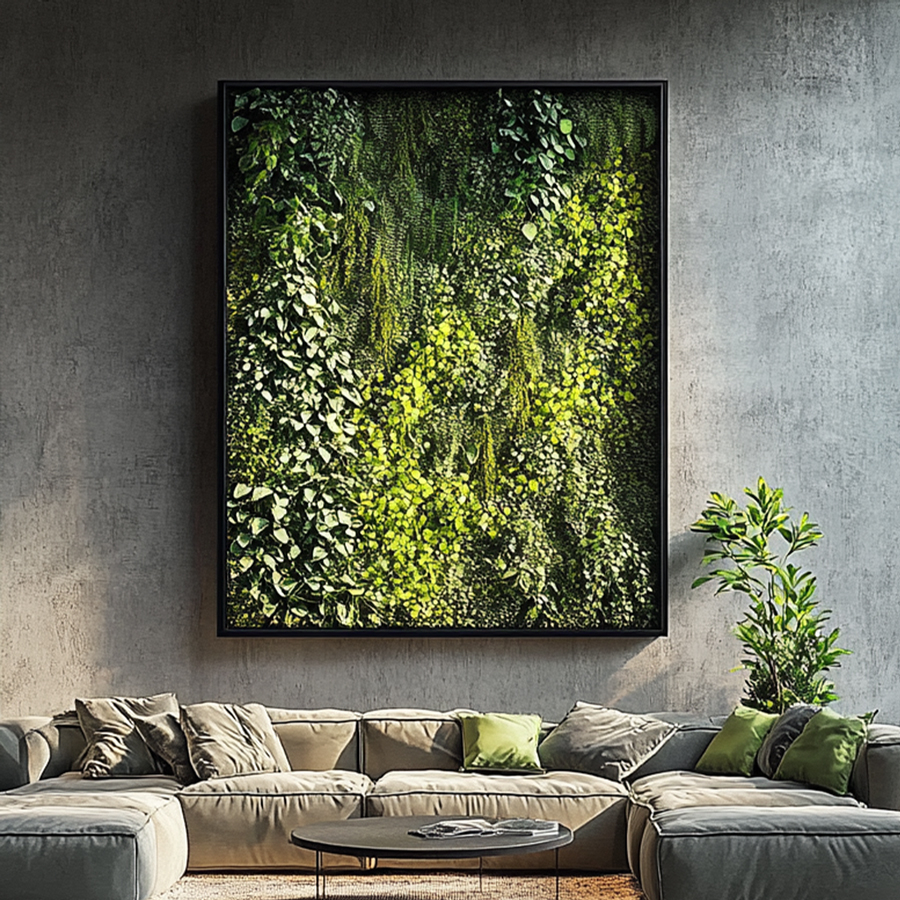
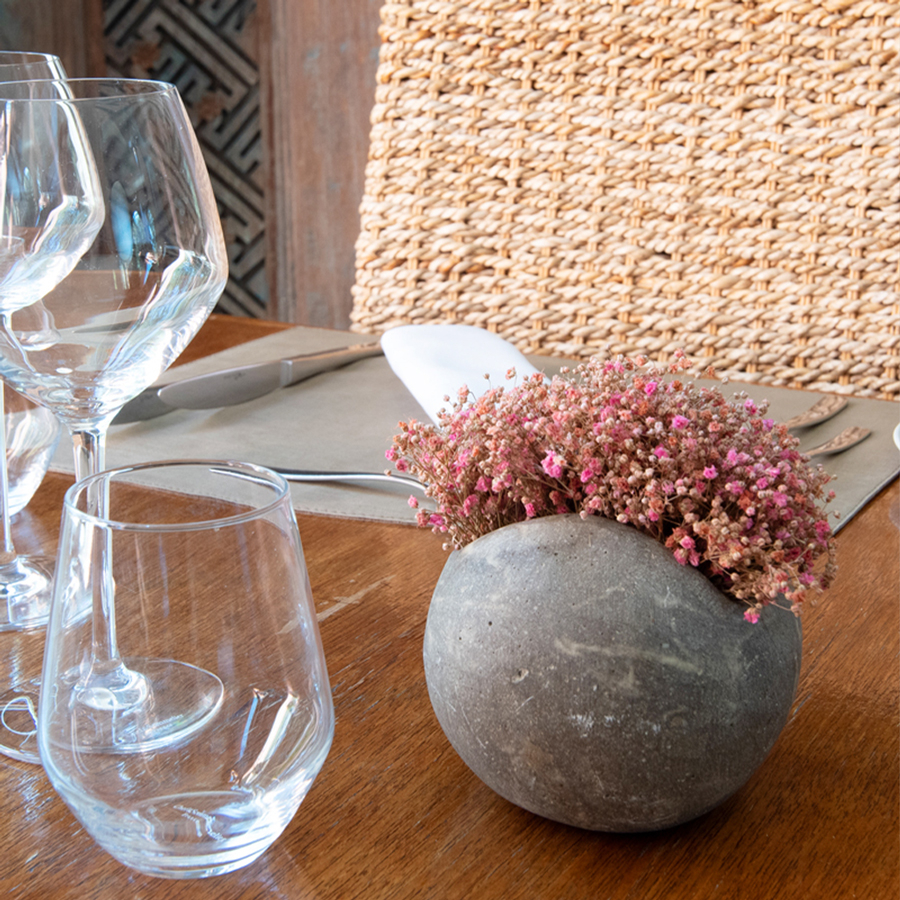



 fr
fr
 es
es
 de
de
 it
it






